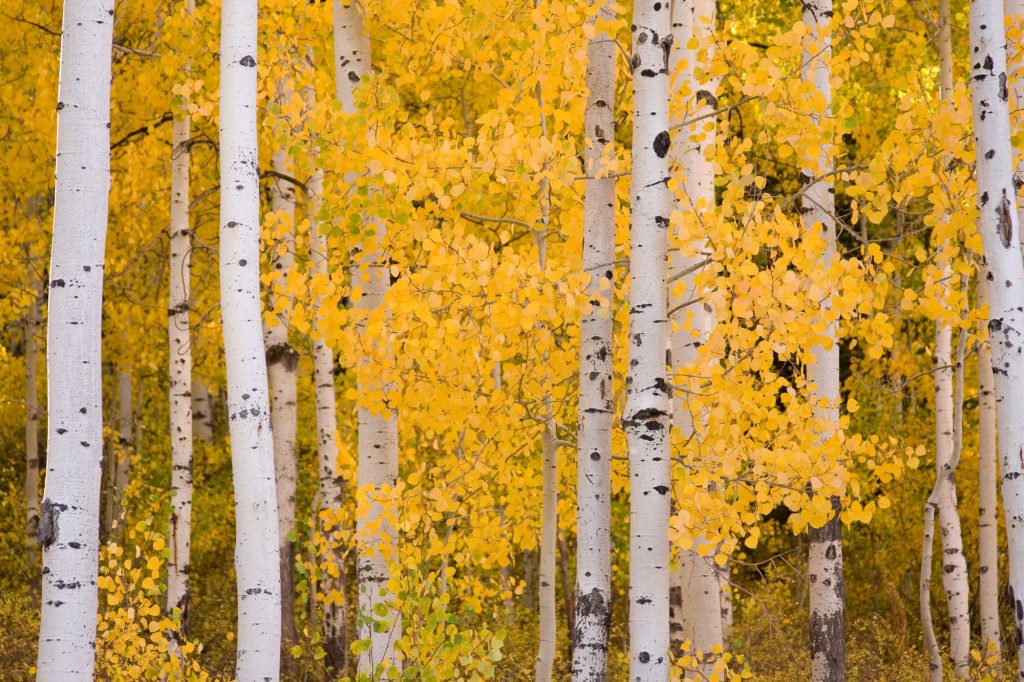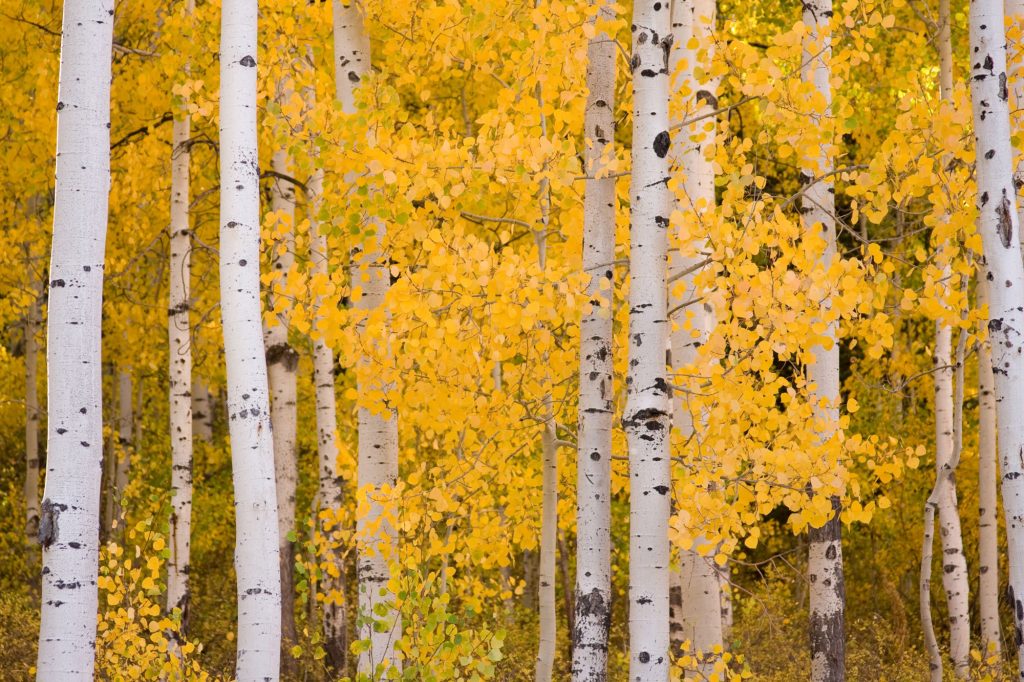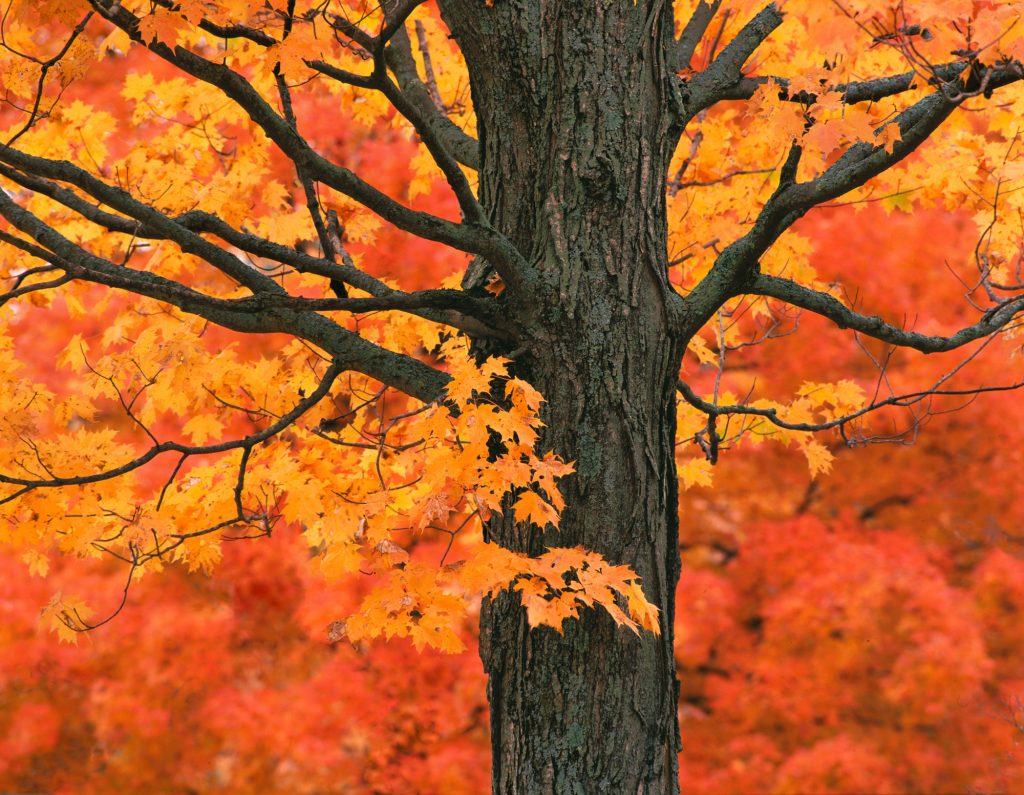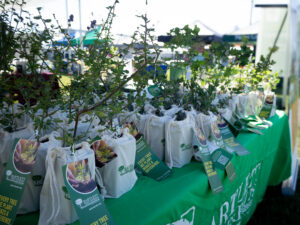Why do leaves change color in the fall? A good start to answering this question is to look at each of the pigments involved.

Chlorophyll
This green pigment plays a starring role in photosynthesis: capturing light energy that is used to produce sugars in plants. Chlorophyll degrades fairly quickly, so it is manufactured and replaced throughout the growing season. Triggered by the shortening days, deciduous trees stop producing replacement chlorophyll in the fall, leading to a loss of green color.
Xanthophyll and Carotene
The lesser-known xanthophyll (yellow) and carotene (orange) pigments are also present during the growing season to help with photosynthesis and sugar production. Unlike chlorophyll, these pigments are relatively stable, so we typically only see them when the green fades away in the fall.
Anthocyanin
The red hues we see in autumn foliage come from anthocyanin pigments. Located in the upper layers of leaves, they can mask the presence of other colors when they are concentrated enough. Anthocyanins aren’t manufactured until late in the season, and their strength and timing tend to depend a lot on the weather. More of these red pigments appear when we have sunny days and cool nights (between 32° and 45° F). Not all trees and shrubs produce anthocyanin in their leaves, so only certain species grace us with these brilliant red hues.
Tannins
As the most stable pigment in tree leaves, tannins lend dead foliage their lasting brown color well after leaf-peeping season has passed.
Environmental Influences
A variety of other factors impact the fall color we see in the landscape from year to year, and from tree to tree. For instance:
- Trees in full sun tend to have more intensely colored fall foliage.
- Fall color shows up earliest in low lying areas, where cool air settles at night.
- When autumn colors appear on a tree before cool temperatures have set in, it’s generally a sign of stress.
- Mild dry spells actually increase red pigment production, but longer droughts lead to premature leaf loss and browning.
- A lot of rain in autumn keeps chlorophyll production active longer than usual, and leaves may be hit by frost before having the chance to develop any striking fall color.
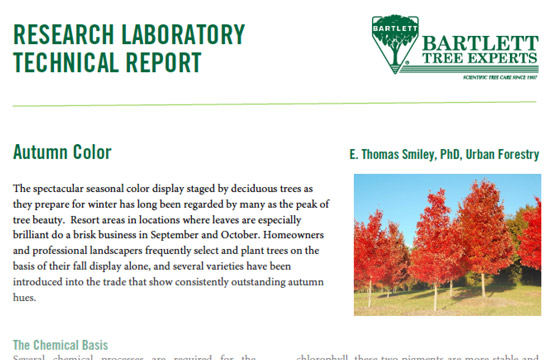 Download a technical report from our research laboratory about autumn foliage color changes on deciduous trees.
Download a technical report from our research laboratory about autumn foliage color changes on deciduous trees.

